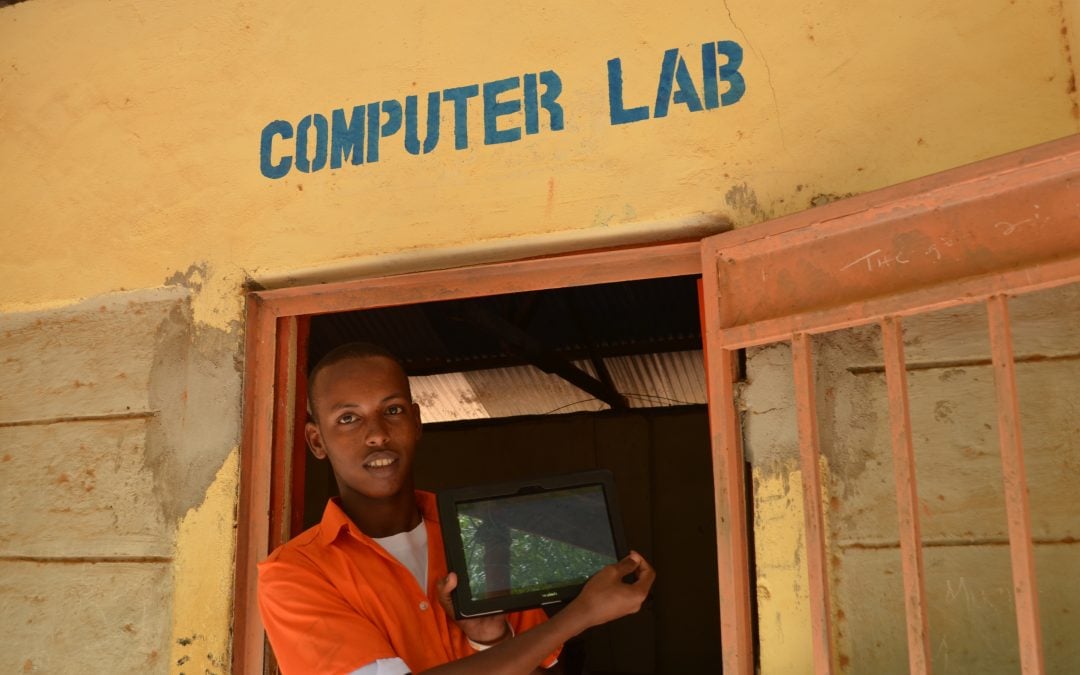Photo Credit: © UNHCR/Silja Ostermann
The Connectivity for Refugees initiative was designed ambitiously: to ensure that all 65 million displaced persons to connectivity. In our last two posts we gave a little background on the initiative’s inception, lessons we’d learnt from a recent internal assessment, and this week we’re looking at how to move things forward with the of scaling the work done on connectivity for refugees inside and outside of our organisation. From our lessons, there are four key principles that emerged as being vitally important, and that will underpin this transition to scale:
1. Transparency and Accountability. In times of resources constraints above the board, the Connectivity for Refugees initiative will prioritise accountability and transparency. This will ensure that we’re having the most tangible impact per dollar spent and open ourselves up to feedback and constructive criticism.
2. Simplification. From the lessons learned, it became clear that inefficiencies hampered progress on good ideas. Like any large organisation, UNHCR has certain systems in place, and protocols to follow – most with good reason. In order to capitalise on the positive aspects of these, an approach will be taken to simplify our approaches as and where possible, from humanitarian programming through to advocacy.
3. More bottom-up and community-driven approaches. Connectivity for Refugees is a ‘community-first’ initiative, rather than a ‘technology-first’ initiative. Through reinforcing this in every piece of work that is undertaken we will be able to better leverage the capacities within refugee and hosting communities to the fullest extent to support their access to connectivity and its benefits, encouraging their participation through all stages of programme design and delivery at the operational level.
4. Devolving delivery and programming to operations. In line with the above, there will be a steer away from HQ driven programming towards operational field level programming. By taking this closer to the communities we’re supporting, greater ownership can be developed by field operations and communities themselves, with the HQ team of Connectivity for Refugees been seen as a true supporting function, leveraging global partnerships and expertise, rather than a reporting line, or programmatic obstacle.
Building on what works
From the lessons learned, there are five areas where the strategic direction of the Connectivity for Refugees initiative will pivot:
1. Strengthening partnerships and working through consortia: Rather than position Connectivity for Refugees as a core implementing function, we will ensure that we capitalise on where UNHCR can add the most value and work strongly in partnership when external expertise is required. This will be about building and developing strong relationships with trade groups such as the GSMA, with infrastructure providers, different consortia such as the new Broadband for Refugees initiative and other UN agencies such as the ITU.
2. Strengthening evidence-based advocacy at a higher level. In order to create conducive environments for connectivity activities, there is a need to ensure that the right policy and regulatory environment is in place to encourage investment from Mobile Network Operators in refugee-hosting areas and the ability for refugees to legally access these network through acquiring SIM Cards. This is achieved through developing more robust advocacy platforms in country, having a direct liaison with Ministries of Communication, Telecommunications Regulators and at the global level with convening entities such as the ITU and the new Broadband 4 Refugees initiative, which aim to transfer good regulatory practice amongst different telecommunications regulators..
3. Building competencies of staff and partners. Hand in hand with the above, substantive efforts will be made to build the capacity of staff in country to address the thematic even where the global initiative isn’t operational. This will start with specific foundational elements about what the topic is, and how to engage with relevant actors in country, and get more specific as the materials are developed. External partnerships will be leveraged to develop this material.
4. Strengthening accountability through data, transparent documentation and evaluation. A dedicated focus will be made to gather data, shared data (in line with UNHCR’s data protection guidelines and principles) and document activities and initiatives. UNHCR plays a core coordinating and brokering function and enhanced efforts will be required to develop materials and case studies based on UNHCR and external interventions. This would also extend to mapping connectivity itself, and evaluating progress in line with the overarching strategy.
5. Prioritising Innovative projects and sharing of promising practices. Housed within the Innovation Service, the initiative has an imperative to push the boundaries of what can be achieved, utilising different ways of working, non-traditional partnerships and alternative business models to promote connectivity across refugee and hosting populations. A triage process will be established to prioritise initiatives that push the boundaries of our approaches to Connectivity for Refugees.
In the coming months, many of these points will be articulated in more detail to bring a greater level of clarity, consistency and impact to investments made in Connectivity for Refugees, and some new exciting sub-thematics are on the horizon which we’re looking forward to exploring with you. In the meantime, please get in touch – we welcome feedback!

